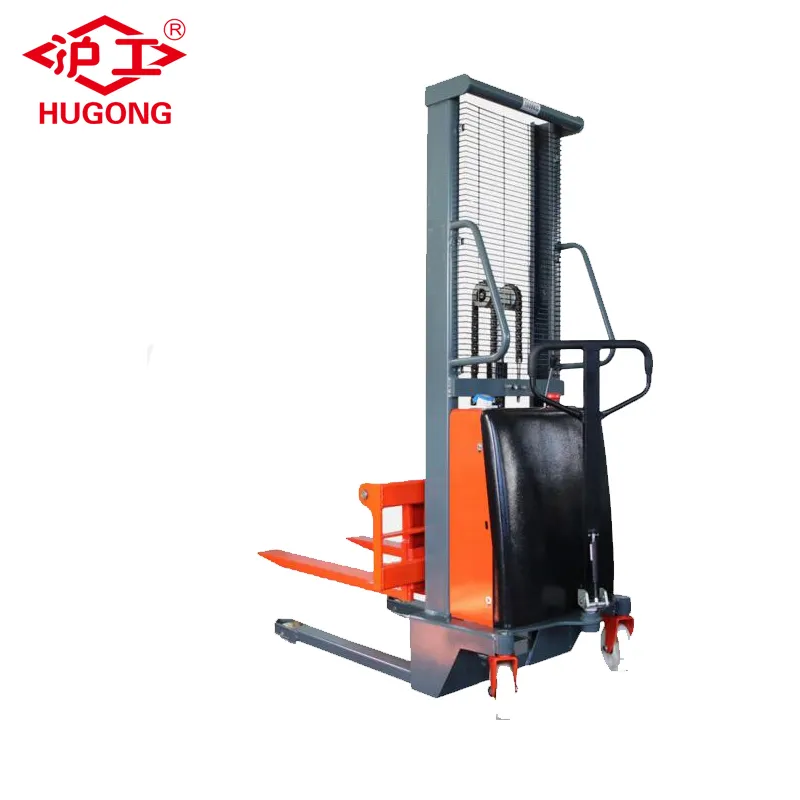
- English
- Español
- Português
- русский
- Français
- 日本語
- Deutsch
- tiếng Việt
- Italiano
- Nederlands
- ภาษาไทย
- Polski
- 한국어
- Svenska
- magyar
- Malay
- বাংলা ভাষার
- Dansk
- Suomi
- हिन्दी
- Pilipino
- Türkçe
- Gaeilge
- العربية
- Indonesia
- Norsk
- تمل
- český
- ελληνικά
- український
- Javanese
- فارسی
- தமிழ்
- తెలుగు
- नेपाली
- Burmese
- български
- ລາວ
- Latine
- Қазақша
- Euskal
- Azərbaycan
- Slovenský jazyk
- Македонски
- Lietuvos
- Eesti Keel
- Română
- Slovenski
- मराठी
- Srpski језик
How to Troubleshoot Common Electric Stacker Issues
2024-11-13
Electric stackers are essential in warehouses, factories, and other settings where goods need to be lifted and transported. However, like any complex machinery, they occasionally experience issues that can disrupt productivity. Knowing how to troubleshoot these problems can save both time and money, helping you quickly restore your stacker to full functionality. Here’s a guide to troubleshooting some of the most common electric stacker issues, from starting problems to performance inefficiencies.
1. Stacker Won’t Start
If your electric stacker fails to start, the issue is often related to power or connectivity.
Troubleshooting Steps:
- Battery Check: Confirm that the battery has a sufficient charge. A dead or undercharged battery is often the culprit, so try charging it fully and then attempt to start the stacker again.
- Connections: Inspect the battery connections. Loose or corroded terminals can prevent the stacker from starting, so ensure all connections are tight and free from corrosion.
- Fuse Inspection: Locate the fuse box and check for any blown fuses. A simple fuse replacement can sometimes resolve the issue.
- Ignition Switch: If other components seem fine, the ignition switch itself may be faulty. Try testing the switch and replace it if necessary.
2. Battery Draining Quickly
A quickly draining battery can be a major inconvenience, causing frequent recharges and reducing productivity.
Troubleshooting Steps:
- Battery Age: Batteries lose efficiency over time. If your battery is old, it may need replacement.
- Charger Check: Ensure the battery charger is working properly by testing it on another battery. A malfunctioning charger may not be delivering a full charge.
- Electrical Components: High power draw from other components, such as motors or lights, can drain the battery. Disconnect non-essential electrical components and see if battery life improves.
- Temperature Conditions: Extreme temperatures can affect battery performance. Operating in more controlled environments can sometimes mitigate this issue.
3. Reduced Lifting Power or Speed
If the stacker is struggling to lift loads or is operating slower than usual, hydraulic or motor issues may be at play.
Troubleshooting Steps:
- Hydraulic Fluid Level: Low hydraulic fluid can reduce lifting power. Check fluid levels and top up if necessary.
- Filter Check: A clogged hydraulic filter can cause reduced lifting efficiency. Replace the filter if needed.
- Motor Inspection: Check if the motor is running properly and isn’t producing unusual sounds or excessive heat. A damaged motor may require professional servicing or parts replacement.
- Lubrication: Lack of lubrication on the lift chains and pulleys can create friction, slowing down operation. Apply appropriate lubrication regularly.

4. Steering Difficulties
Steering issues can make the stacker difficult to control and may even create safety risks.
Troubleshooting Steps:
- Steering Mechanism: Inspect the steering components for damage or wear. Tighten any loose parts and replace worn ones.
- Hydraulic Fluid Check: If the steering is hydraulically assisted, low fluid can make it hard to steer. Top up hydraulic fluid if necessary.
- Control Panel: If steering is electronically controlled, there may be a fault in the control panel or wiring. Ensure the control panel is functional and recalibrate if needed.
5. Jerky or Inconsistent Movement
Jerky movement can make precise operations difficult and may indicate issues with the hydraulics or motor.
Troubleshooting Steps:
- Hydraulic Fluid: Low hydraulic fluid levels are often the cause of erratic movement. Refill the fluid if it’s low.
- Control Module: Loose or corroded wiring in the control module can also cause inconsistent movement. Tighten connections and clean any corrosion.
- Motor Issues: Check for signs of wear or damage in the motor. If the motor is failing, replacement may be necessary.
6. Forks Not Lifting or Lowering Properly
If the forks are unresponsive, there may be a problem with the hydraulic system or mechanical blockages.
Troubleshooting Steps:
- Fluid Check: Low hydraulic fluid can affect lifting and lowering. Check and top up fluid as needed.
- Air in Hydraulic System: Air trapped in the hydraulic system can prevent smooth fork movement. Follow the manufacturer's instructions to bleed the system.
- Filter Inspection: A clogged hydraulic filter can restrict flow, causing unresponsive forks. Replace the filter if it’s dirty or blocked.
- Inspect Chains and Pistons: Look for obstructions or damage on the lift chains or pistons that might be blocking movement.
7. Error Codes Displayed on Control Panel
Modern electric stackers often have diagnostic systems that show error codes when something is wrong.
Troubleshooting Steps:
- Consult Manual: Error codes are usually specific to each model. Check the stacker’s manual to identify the issue corresponding to the code.
- Restart the System: Try turning off the stacker, waiting a few minutes, and turning it on again. This can sometimes reset minor system errors.
- Check Sensors and Wiring: Error codes may indicate sensor or wiring problems. Inspect sensors for dirt or damage, and ensure that wiring connections are secure.
8. Excessive Noise During Operation
Unusual noises can indicate various mechanical issues, from loose bolts to hydraulic problems.
Troubleshooting Steps:
- Tighten Fasteners: Loose bolts or screws can cause rattling or clanging sounds. Ensure all fasteners are tight.
- Lubricate Bearings and Chains: Apply grease to bearings, chains, and other moving parts. This can reduce friction and quieten operation.
- Hydraulic System Check: Low fluid or air in the system can make the hydraulics noisy. Refill or bleed the system if necessary.
9. Wheels Not Turning Properly
Wheels that don’t turn smoothly can make the stacker difficult to maneuver.
Troubleshooting Steps:
- Inspect for Damage: Check wheels for cracks, flat spots, or obstructions, and replace any damaged wheels.
- Bearing Check: Worn-out bearings can also restrict wheel movement. Replace or lubricate bearings as needed.
- Clear Debris: Remove any debris around the wheels that might be impeding movement.
10. Overheating in Battery or Motor
Overheating can indicate that the stacker is overloaded or that air circulation is insufficient.
Troubleshooting Steps:
- Allow a Cooldown: Give the stacker time to cool down if it’s been in continuous operation.
- Check Air Vents: Ensure that the air vents around the battery and motor are clear of dust or debris.
- Review Load Capacity: Verify that the load doesn’t exceed the stacker’s rated capacity, as overloading can overheat the motor and battery.
Preventive Maintenance Tips
To avoid common issues with electric stackers, regular maintenance is essential:
- Battery Care: Regularly charge and inspect batteries to ensure they hold a charge and are free from corrosion.
- Lubrication: Lubricate all moving parts, especially chains, bearings, and wheels, to minimize wear and tear.
- Hydraulic Maintenance: Monitor hydraulic fluid levels and replace filters as needed.
- Error Code Familiarity: Knowing the stacker’s error codes will help in quicker troubleshooting.
Conclusion
Electric stackers are invaluable in many workplaces, but occasional issues are inevitable. By understanding the typical problems and how to troubleshoot them, operators and technicians can minimize downtime and ensure the stacker operates safely and efficiently. Regular maintenance, timely inspections, and prompt troubleshooting are key to maximizing the lifespan and performance of electric stackers.
As a professional China Electric Stacker manufacturers and suppliers, we provide customers with comprehensive project management services. Our products can be customized. Besides, our products also support wholesale. Welcome to contact us at SALES3@YIYINGGROUP.COM.


